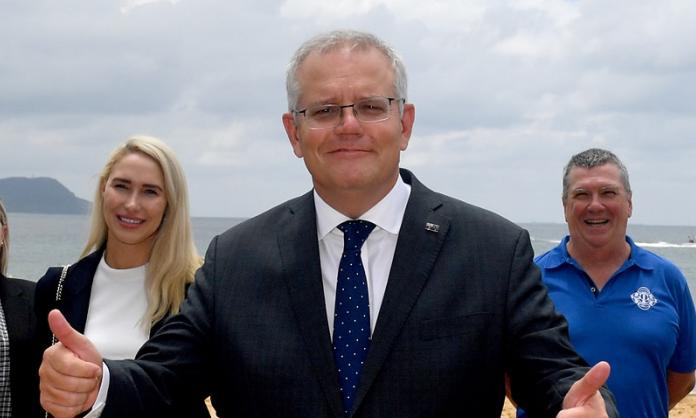“As per our call to you today—and as confirmed by S.A. Health—you are required to present for work tomorrow (Monday) as normal unless you are feeling unwell. This applies even if you have tested positive for Covid-19 either by a PCR or Rapid test (RAT), and also if you are currently isolating because you are a close contact.”
—Letter to workers from management at Teys meatworks in Naracoorte, South Australia, 9 January.
--------------------
Thursday 13 January should be an infamous day in the history of the pandemic in Australia. A day when 57 new deaths were reported, a new national record. A day when hospitalisations of COVID-positive people surged past 4,000, nearly tripling in a fortnight. A day when the torrent of testimony from healthcare workers included a Melbourne nurse telling the ABC about being regularly asked to work 18- to 20-hour shifts, in areas far outside her areas of expertise.
Worse, probably much worse, is to come in the next few weeks.
But instead of changing course on the disastrous strategy of “living” with COVID, National Cabinet chose this day to put its foot on the accelerator of transmission, announcing a dramatic weakening of the already threadbare protections for workers.
So-called close contacts will no longer be required to stay home from work for seven days in a string of “critical” industries—this will mean more cases, more ill health and more deaths.
“Close contacts” are already defined in an extremely narrow way, so as to exclude anyone who was exposed to a COVID-positive case from a workplace or education setting. The Victorian government first pioneered this restricted definition of “close contact” (applying only to someone who lives with a positive case) on 18 November.
From that date in Victoria, even if you spent eight hours working or studying in close proximity to a positive case, you could never be classified as a “close contact”. This defies all common sense when dealing with a virus that can be transmitted in a fleeting moment. But it keeps industry going—all industry, regardless of how “essential” it is deemed to be.
By the end of December, this restrictive, dangerous definition of a “close contact” had been picked up nationally. And now, the meagre isolation requirements for “close contacts” are being effectively scrapped for huge numbers of workers.
Between a quarter and half of “close contacts” will become positive, according to Victorian COVID commander Jeroen Weimar. We know that the most infectious period is the couple of days before symptoms develop, and we know that many rapid tests give false “negative” results during this period. So it’s obvious that this policy will have appalling consequences. In fact, this is officially acknowledged.
The nation’s chief health officers, assembled in the Australian Health Protection Principals Committee, released a statement on 30 December allowing the scrapping of isolation requirements for workers in “critical” industries. The AHPPC acknowledges that this “pragmatic approach to TTIQ” (Test, Trace, Isolate, Quarantine), part of “the living with COVID policy approach”, will “likely limit the ability of TTIQ to suppress transmission of COVID-19 at a population level”.
In other words, it’s officially acknowledged that allowing employers to order “close contacts” (i.e., household contacts) to work will mean more infections, more ill health and more deaths. And from there, it’s only a short step to allowing employers to take the even more dangerous step of ordering known positive cases to work.
This nightmare is already a reality at the Teys meatworks in Naracoorte, South Australia—where close contacts and then even positive cases (wearing yellow helmets to identify them) are being ordered into work by management with the blessing of SA Health. The result has been 140 infections out of 400 workers.
This disastrous, literally sickening model is operating in practice in many hospitals, as “close contact” healthcare workers are ordered to work during their most infectious period.
And it’s coming to your workplace very soon. The Australian Chamber of Commerce and Industry wants “all workers” to be subject to the weakened isolation guidelines—and that’s the direction in which policy is travelling, at a rapid pace.
National Cabinet’s decision to scrap isolation requirements for “close contacts” applies immediately in transport and logistics. States including Victoria, Queensland and New South Wales have already introduced similar measures for healthcare workers.
From there, these measures will be rolled out through a long list of industries announced by National Cabinet, and far beyond. The AHPPC has already approved workers in “essential” industries. This includes the whole of finance, real estate, mining and the whole of telecoms.
Workers in higher education have been thrown on the scrapheap wholesale over the past two years. They are now declared “essential” by the AHPPC and can potentially be forced to work through what should be an isolation period, as soon as National Cabinet and state health authorities draw up the health orders.
School staff are also on the AHPPC list. The determination of Scott Morrison and most state premiers to “push through” a wave of ill health will force unvaccinated or barely vaccinated primary school kids, and high school students with waning immunity, back into classes in a couple of weeks.
Schools are major sites of transmission, especially among unvaccinated primary school students. Victoria’s acting chief health officer has noted that towards the end of term four last year, an incredible 30 percent of positive cases were among those aged 6 to 11 years. With school out, that proportion has now fallen to 4 percent. Large-scale transmission will resume along with classes in poorly ventilated classrooms—and forcing school staff back to work despite being “close contacts” will result in even more sickness.
The current settings are firmly and deliberately directed at establishing a brutal “business as usual” with a massively increased level of ill health, permanent dysfunction in already strained health services and most likely a massive legacy of long COVID.
There are alternatives, of course. Work could be reallocated—for instance logistics and transport for food supply could be bolstered by workers shifted from less crucial supply chains. Shutting down or severely restricting major super spreading environments like indoor dining, nightclubs and the Australian Open would mean less transmission all round. Schools and universities could stay mainly remote until the mitigations that have been needed for two years are actually put in place.
Health orders could be amended to make work from home mandatory where possible. Child care for essential workers could be provided in the home (like during New Zealand’s lockdowns) rather than in large centres, minimising the spread further. There are many other straightforward ideas that could be thought of and implemented. But the precondition for any of this is reversing course on the sickening “let it rip” strategy of our leaders—state and federal, Liberal and Labor.
Various union branches have criticised the weakening of isolation requirements, with the ACTU declaring: “If the prime minister will not act, and if our national government will not provide national leadership during this time of national crisis, then workers and their unions will”. Secretary Sally McManus announced a meeting of unions for Monday, 17 January, to discuss a response.
This at least opens up a sense of public contest over these sickening measures—something that Australia’s union movement has failed to do through most of the pandemic. However, it’s a dramatic change of course that is needed from our unions, directed at organising and industrial action, rather than sternly worded tweets.
The dominance of the politics of class collaboration in the labour movement is the number one obstacle to this. Federal Labor leader Anthony Albanese summed this up when he told ABC Radio on 13 January: “We need to have a proper consultation with working people ... Like it was at the beginning of the pandemic, where the trade union movement and its representatives put aside wages, conditions, did the right thing to keep the economy going. What they need is a government that is now prepared to back them”.
This is the exact problem. Rather than aggressively pursuing the interests of workers, Labor and the big majority of the union movement have spent the pandemic either becoming “best friends forever” with the government (to use Christian Porter’s term for Sally McManus last year) and/or pushing for particular industries to remain open regardless of consequences for public health. This has left workers in the vast majority of workplaces unprepared for the level of fight and organisation needed in this most dramatic crisis of the pandemic in Australia so far.
It’s possible to fight and even win small but important gains at a workplace level: better masks, notice of cases, ventilation and air filters are all worth fighting for and possible to win. To turn things around on a bigger scale will need a much bigger fight, and much larger radical forces.









